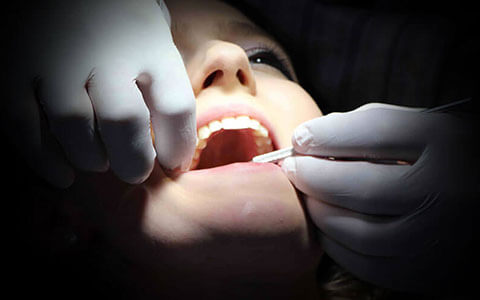Dental Terms
Resorption Kanata
Tooth resorption is a complex dental condition involving the loss of tooth structure due to the body's natural ability to remove mineralized tissue, primarily through the action of cells like osteoclasts. There are two main types of tooth resorption: external and internal. This condition can be caused by various factors, including trauma, infection, or hyperplasia.
Internal Tooth Resorption
Internal resorption is a rare condition where dentin and pulpal walls start to resorb from the central portion within the root canal. It may first appear as a pinkish area on the tooth's crown, indicating the presence of hyperplastic, vascular pulp tissue filling the resorbed areas. This condition is often referred to as the "pink tooth of Mummery," named after the 19th-century anatomist James Howard Mummery.
The cause of internal resorption can sometimes be linked to trauma, but in other cases, it remains unknown. If the condition is detected before it leads to perforation of the crown or root, endodontic therapy (root canal therapy) can be performed with a relatively high success rate.
External Tooth Resorption (Root Resorption)
External resorption, also known as root resorption, involves the breakdown and loss of the root structure of a tooth due to the action of living body cells that attack the tooth. Severe root resorption is challenging to treat and often necessitates tooth extraction.
Root resorption occurs when macrophages differentiate into odontoclasts in the surrounding tissue. If these cells are in close proximity to the root surface, they can resorb the root's cementum and underlying dentin. The severity of this condition can range from microscopic pits on the root surface to complete destruction.
In deciduous (primary) teeth, root resorption is a natural process that facilitates the shedding of these teeth to make way for permanent teeth. It is triggered by the differentiation of osteoclasts due to pressure exerted by erupting permanent teeth.
In permanent teeth, root resorption can occur due to various factors, including trauma, ectopic teeth obstructing the root path, chronic inflammation, excessive occlusal (bite) forces, improper reimplantation, aggressive tumors or growths, and sometimes unknown causes. Orthodontic forces from braces are a common cause of root resorption in Western societies.
The roots of teeth are covered with cementum, a hard tissue similar to bone but more resistant to resorption. Several theories attempt to explain why cementum resists resorption, with the most prevalent hypothesis suggesting that cementum's higher mineralization and anti-angiogenic properties inhibit the formation of blood vessels near it, thus preventing access by osteoclasts.
Expert Dental Care for Tooth Resorption
If you suspect or have been diagnosed with tooth resorption, it's crucial to seek professional dental care promptly. Our experienced team at Kanata Highlands Dental Care, led by Dr. Maneet Ahlawat, is here to provide comprehensive evaluation, diagnosis, and treatment options to address your specific condition and preserve your dental health.
Contact Us Today
If you have concerns about tooth resorption or wish to schedule an appointment with Dr. Maneet Ahlawat, please contact our practice at (613) 270-1001. We are conveniently located at Suite 100, 5045 Innovation Dr. in Kanata, ON, and we look forward to helping you maintain your oral health.

